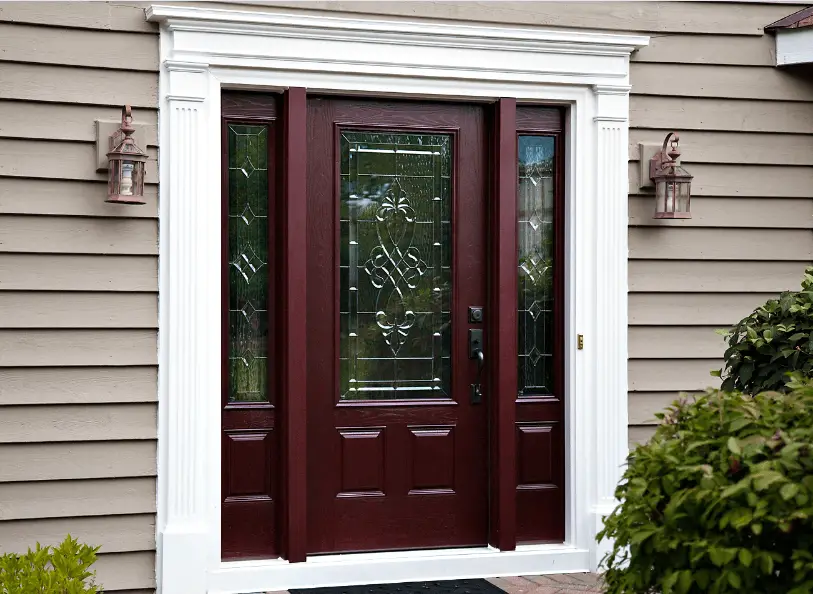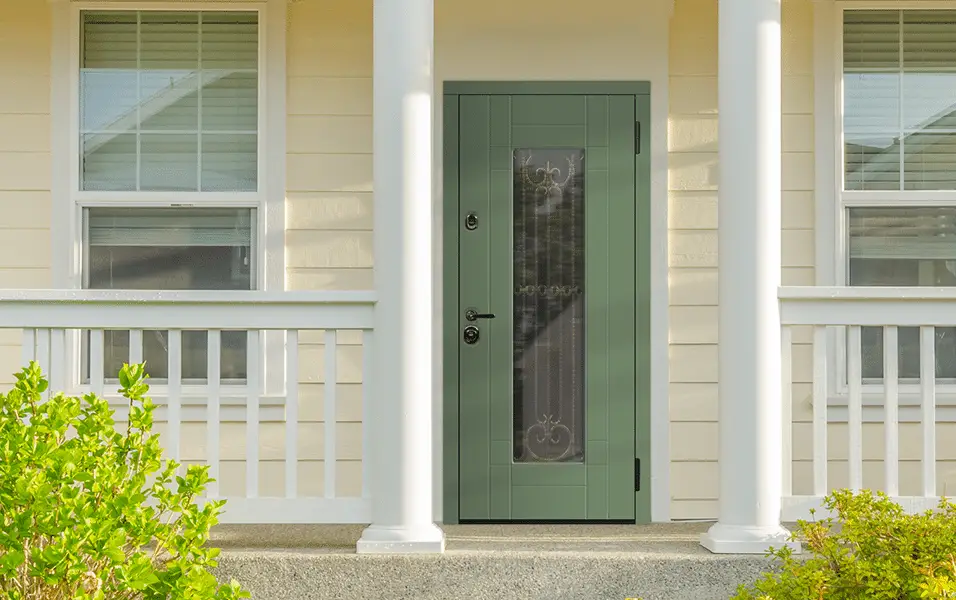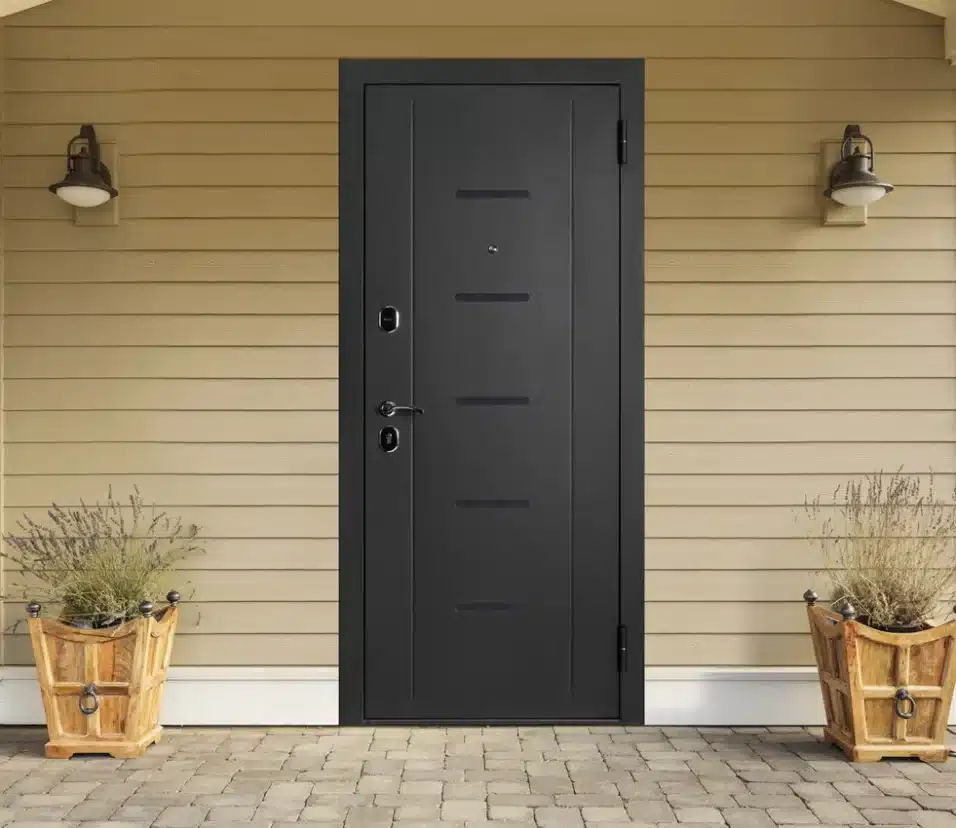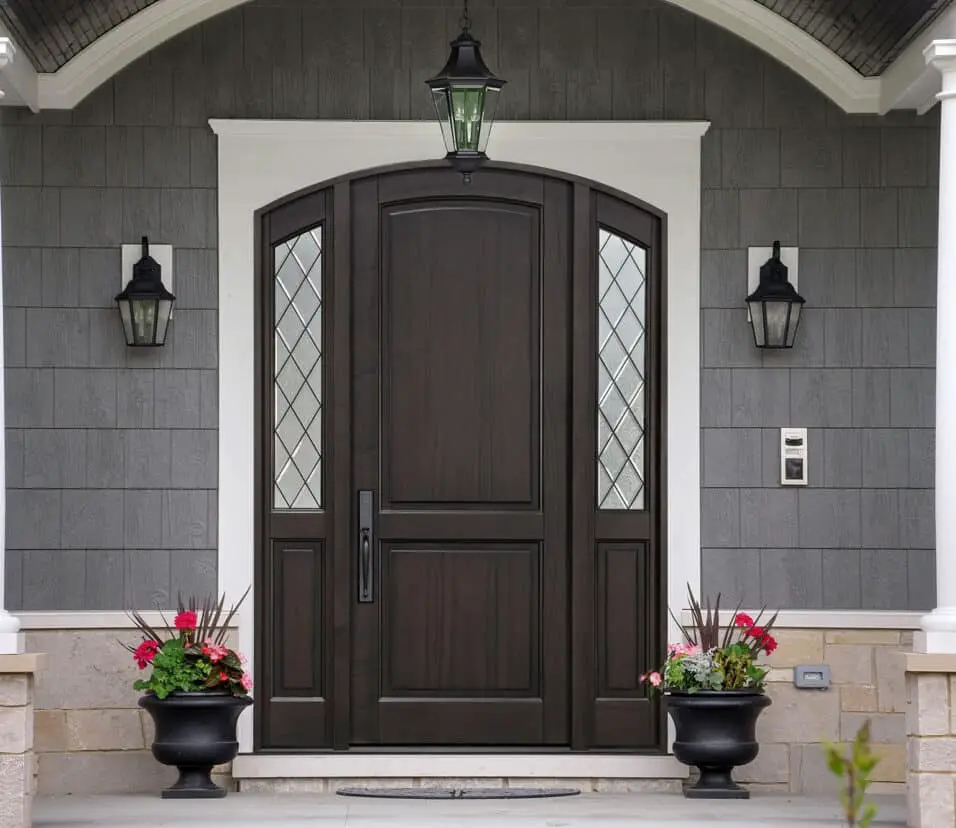How To Restain A Fiberglass Exterior Door
Introduction
How To Restain A Fiberglass Exterior Door: Your home’s exterior makes a powerful first impression, and your front door is a focal point that sets the tone for your entire property. If you have a fiberglass exterior door that has lost its luster and charm due to wear, weather, or sun exposure, then it’s time to consider restaining it. Restaining a fiberglass exterior door is a rewarding and cost-effective home improvement project that can breathe new life into your entryway.
Fiberglass doors have gained popularity for their durability and versatility. They are designed to mimic the look of wood but require far less maintenance. However, over time, the original stain or finish on a fiberglass door can fade or deteriorate, leaving it looking lackluster and worn. Fortunately, restaining is a practical solution to revive the door’s appearance, enhance its curb appeal, and protect it from further damage.
In this comprehensive guide, we will walk you through the step-by-step process of restaining a fiberglass exterior door. Whether you’re a seasoned DIY enthusiast or a novice looking to enhance your home’s aesthetics, this guide will equip you with the knowledge and skills needed to restore your door to its former glory. So, let’s embark on this transformative journey to give your home’s entrance a fresh and inviting look.
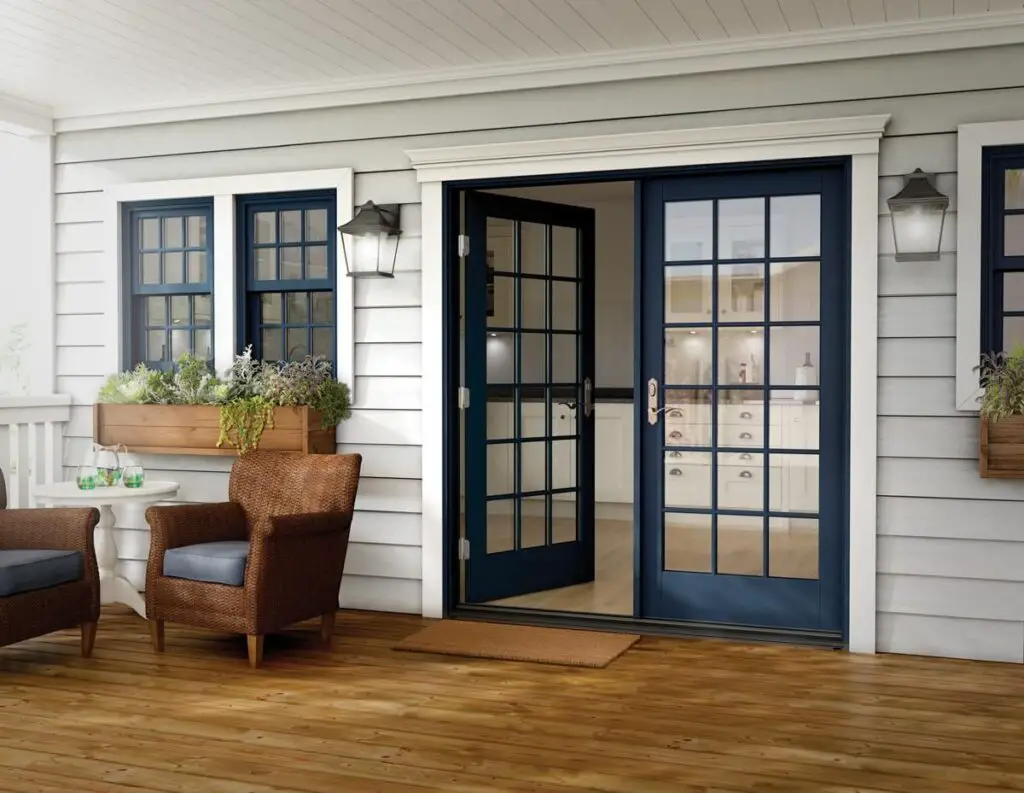
Can you refinish a fiberglass front door?
Caring for and refinishing your fiberglass door need not take much of your time. Often a regular clean will keep it looking fresh and welcoming. You can do a refinish project on the entry door when you think the house needs a bit of a facelift. A few helpful hints may get you thinking and down to work this weekend.
Yes, you can refinish a fiberglass front door. Fiberglass doors are popular for their durability and versatility, and refinishing them is a practical way to restore their appearance and protect them from the elements. Over time, the original finish on a fiberglass door may wear out or become damaged due to exposure to sunlight, rain, and daily wear and tear. Refinishing can rejuvenate the door, making it look like new again.
Here are the basic steps involved in refinishing a fiberglass front door:
- Preparation: Start by removing the door from its hinges and placing it on a stable work surface. Ensure the work area is well-ventilated.
- Cleaning: Clean the door thoroughly to remove dirt, dust, and any residue from the old finish. A mixture of mild detergent and water is usually sufficient. Rinse and allow the door to dry completely.
- Sanding: Lightly sand the door’s surface with fine-grit sandpaper (around 220 grit). This helps remove any rough spots, promotes adhesion, and provides a smooth surface for the new finish.
- Repair: If there are any dents, dings, or deep scratches on the door, you can repair them with a suitable filler. Follow the manufacturer’s instructions for the filler product you choose.
- Priming: Apply a high-quality, exterior-grade primer that is compatible with fiberglass surfaces. The primer helps the new finish adhere properly and provides a stable base.
- Staining or Painting: Depending on your preference, you can either stain or paint the door. Choose a high-quality stain or paint formulated for exterior use. Apply multiple coats as needed, allowing each coat to dry thoroughly.
- Topcoat (Optional): To enhance durability and protect the finish from UV rays and weather, consider applying a clear topcoat designed for exterior applications.
- Reinstallation: Once the finish has dried completely, reinstall the door on its hinges.
Refinishing a fiberglass front door is a cost-effective way to improve the appearance of your home’s entrance and extend the life of the door. It’s a DIY project that can yield impressive results with the right preparation and materials.
Can you change the color of a fiberglass door?
Fiberglass doors that come in a dark woodgrain finish may not need to be painted, but lighter colors may show wear over time and benefit from a fresh coat of paint. Fiberglass doors can be painted any color, so it’s really up to the homeowner’s personal preference.
Yes, you can change the color of a fiberglass door. Fiberglass doors offer versatility when it comes to altering their appearance. Whether you want to update the color to match a new exterior design scheme or simply refresh the look, changing the color of a fiberglass door is entirely feasible. Here’s how you can do it:
Changing the Color of a Fiberglass Door:
- Clean and Prepare: Begin by thoroughly cleaning the door’s surface to remove dirt, grime, and any contaminants. Use a mild detergent and water solution, rinse the door well, and allow it to dry completely.
- Sand the Surface: Lightly sand the door’s surface using fine-grit sandpaper (around 220 grit). This step helps remove any gloss or rough spots and provides a slightly textured surface for better paint or stain adhesion.
- Prime (if painting): If you’re planning to paint the door, apply an exterior-grade primer that is compatible with fiberglass surfaces. The primer helps the paint adhere properly and provides a stable base for the new color.
- Paint or Stain: Apply multiple coats of the new paint or stain, following the manufacturer’s instructions for drying times between coats. Ensure that each coat is applied evenly and smoothly for the best results.
- Clear Topcoat (optional): To enhance the durability of the new color and protect it from UV rays and weather, consider applying a clear, UV-resistant topcoat designed for exterior applications. This step is especially useful for doors exposed to direct sunlight.
- Reinstallation: Once the paint or stain is completely dry, reinstall the door on its hinges.
When selecting the paint or stain, be sure to choose products that are specifically formulated for exterior use and are suitable for fiberglass surfaces. Additionally, consider the color change you want to achieve, as it may require multiple coats, especially when going from a dark color to a lighter one.
Changing the color of a fiberglass door is a practical way to update your home’s appearance and create a fresh look for your entryway. It’s a DIY project that can be rewarding and cost-effective with proper preparation and the right materials.
What is the best stain to use on a fiberglass door?
Manufacturers of fiberglass doors have really come a long way, offering realistic grain patterns that make you take a second look. However, the most important aspect to making it look authentic is the finish you apply. ZAR® Wood Stain and Polyurethanes are finishes recommended by many leading door manufacturers.
The best stain to use on a fiberglass door is one that is designed specifically for exterior applications and is suitable for fiberglass surfaces. Water-based gel stains or oil-based stains both work well, but each has its advantages. Water-based gel stains are easier to work with, dry faster, and have lower VOC emissions. Oil-based stains may provide a deeper and more long-lasting finish but can take longer to dry and may have higher VOC levels. It’s essential to choose a stain that complements your door’s surface, follows the manufacturer’s recommendations, and suits your preferences regarding finish and environmental considerations. Additionally, consider using a clear topcoat to protect the stain and enhance its durability.
Is it better to paint or stain a fiberglass door?
Furthermore, some builders believe that painting a fibreglass door – rather than staining it – makes it more durable. Another consideration is how much exposure your front door will get to direct sunlight. If your door is situated where it will get a lot of strong sunlight, paint is the more durable option.
The choice between painting and staining a fiberglass door depends on your preferences and the look you want to achieve. Here are some factors to consider:
- Painting:
- Color Options: Painting offers an extensive range of color options, including bold and vibrant shades.
- Durability: Paint can provide a durable and long-lasting finish, especially if you use a high-quality exterior paint.
- Coverage: Paint can cover imperfections or inconsistencies in the door’s surface effectively.
- Protection: Paint provides excellent protection against UV rays and weather.
- Staining:
- Natural Look: Staining allows you to maintain the natural wood grain appearance of fiberglass doors, mimicking the look of real wood.
- Maintenance: Stains tend to require more frequent maintenance than paint, as they may need to be reapplied every few years.
- Less Peeling: Unlike paint, stains don’t peel over time.
Ultimately, the choice between paint and stain depends on your aesthetic preferences, the level of maintenance you’re willing to undertake, and the desired look for your fiberglass door. Both options can be effective, so it’s essential to select the one that aligns with your goals and the overall design of your home.
What is the best paint or stain for fiberglass door?
Choose a latex-based paint when possible
Latex-based paint dries quicker and covers better compared to oil-based paint, and advancements have closed the durability gap between the two paint types. If you have a fiberglass door, latex-based paint is always a great choice.
The best paint or stain for a fiberglass door depends on your specific preferences and the look you want to achieve. Here are some options to consider:
Paint:
- Exterior Acrylic Latex Paint: This type of paint is often recommended for fiberglass doors. It’s durable, easy to clean, and available in a wide range of colors. Choose a high-quality, exterior-grade acrylic latex paint for the best results.
- Oil-Based Paint: Oil-based paints can also work well on fiberglass doors. They provide a smooth, durable finish and are resistant to moisture. However, they can have a stronger odor and may take longer to dry.
Stain:
- Water-Based Gel Stains: Water-based gel stains are an excellent choice for staining fiberglass doors. They are easy to work with, have low VOC emissions, and can mimic the appearance of wood grain effectively.
- Oil-Based Stains: Oil-based stains can provide a deep and rich finish for fiberglass doors. They are durable and offer excellent protection against UV rays and the elements. However, they may take longer to dry and have a stronger odor.
The best paint or stain ultimately depends on your preferences regarding appearance, durability, and ease of application. Be sure to follow the manufacturer’s instructions and prepare the surface properly for the best results.
Can you use sandpaper on a fiberglass door?
Sanding The Door:
Sanding helps create a smoother surface so that you can achieve better results when applying primer and paint later on. Use 120-grit sandpaper as this will provide enough texture without damaging the fiberglass material.
Yes, you can use sandpaper on a fiberglass door, and it is often an essential step in the preparation process before painting or staining. Sanding helps to:
- Smooth the Surface: Sandpaper can remove any rough spots, imperfections, or uneven areas on the door’s surface, ensuring a smooth and even finish.
- Promote Adhesion: Sanding creates a slightly rough surface that enhances the adhesion of paint or stain, helping it bond effectively to the fiberglass.
- Remove Old Finish: If you are refinishing the door, sandpaper can help strip away the old paint or stain to provide a clean canvas for the new finish.
When sanding a fiberglass door, it’s essential to use the appropriate grit of sandpaper. Always sand in the direction of the grain (if the door has a simulated wood grain texture) and wear protective gear, such as a dust mask and safety glasses, to prevent inhaling dust particles.
Do stained fiberglass doors fade?
Oil based gel stains and varnish have no UV protection. When the sun hits the doors, the fiberglass doors will expand and contract, the oil-based gel stain and varnish does not expand and contract. Over time this is when the finish on the doors starts to fade and crack.
Yes, stained fiberglass doors can fade over time, especially when exposed to direct sunlight and the elements. The extent and speed of fading can vary depending on factors such as the quality of the stain used, the door’s location, and the climate.
To help prevent or slow down fading, consider the following tips:
- Choose UV-Resistant Stains: Look for stains that are formulated to resist UV (ultraviolet) rays. These stains are designed to provide better protection against fading caused by sun exposure.
- Apply a Clear Protective Topcoat: After staining, consider applying a clear, UV-resistant topcoat. This additional layer can provide an extra barrier against UV damage and extend the life of the stain.
- Regular Maintenance: Inspect your stained fiberglass door periodically and touch up any areas that show signs of fading or wear. This maintenance can help preserve the door’s appearance.
While some fading may occur over time, proper stain selection and maintenance can significantly prolong the vibrant appearance of your stained fiberglass door.
What paint will stick to fiberglass door?
Use acrylic, polyester, polyurethane, or epoxy resin paint on your fiberglass door. Try to pick a paint that matches the type of fiberglass for the best results. Do not use oil-based paints because these can damage the door.
To ensure that paint adheres properly to a fiberglass door, it’s essential to follow these steps:
- Clean the Surface: Thoroughly clean the door’s surface to remove dirt, dust, and any contaminants. Use a mild detergent and water, rinse well, and allow it to dry completely.
- Sand the Surface: Lightly sand the door’s surface with fine-grit sandpaper (around 220 grit). This creates a slightly rough surface that promotes paint adhesion.
- Use a Primer: Apply a high-quality, exterior-grade primer designed for use on fiberglass surfaces. This helps the paint adhere and provides a stable base for the topcoat.
- Choose the Right Paint: Select a paint specifically formulated for exterior use and suitable for fiberglass. Acrylic latex paints or oil-based paints are common choices. Make sure the paint is compatible with the primer you’ve used.
- Apply Multiple Coats: Apply two or more coats of paint, allowing each coat to dry thoroughly between applications. Follow the manufacturer’s instructions regarding drying times.
- Protect the Finish: Consider applying a clear, UV-resistant topcoat over the paint to protect it from UV rays and the elements, especially if the door is exposed to direct sunlight.
By following these steps and using the right paint and primer, you can ensure that the paint adheres effectively to a fiberglass door and provides a long-lasting, durable finish.
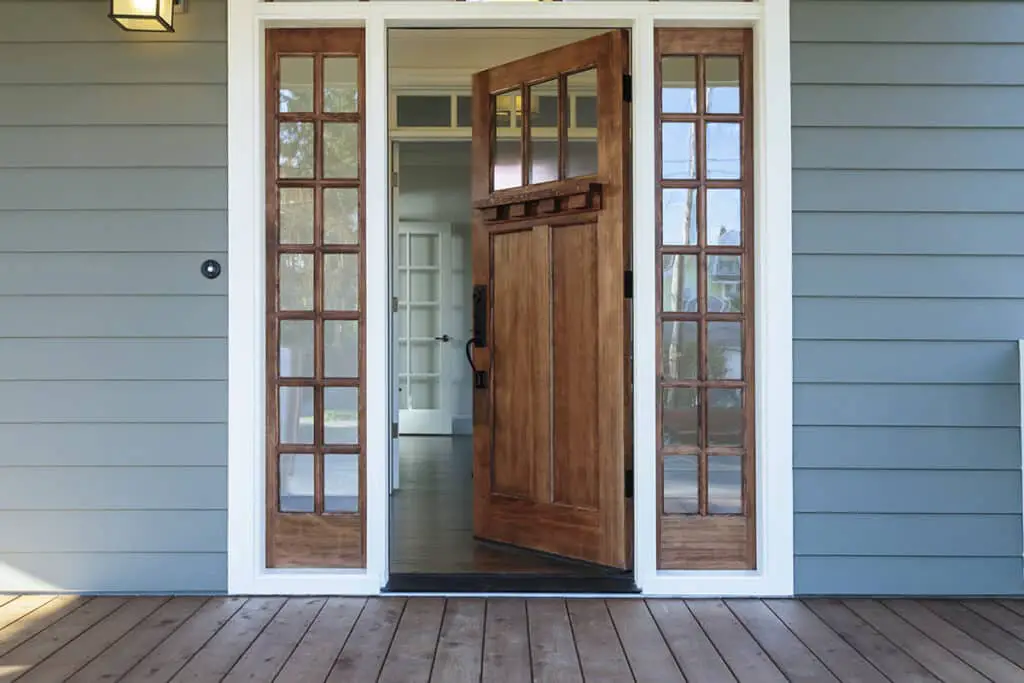
Conclusion
In conclusion, the process of restaining a fiberglass exterior door is a transformative endeavor that can breathe new life into your home’s entrance, leaving a lasting impression on visitors and enhancing your property’s overall curb appeal. Throughout this guide, we have explored the step-by-step procedure for restoring the beauty and vitality of your fiberglass door, and in doing so, we’ve unlocked the potential to extend its lifespan and protect it against the elements.
By carefully following the outlined steps, you’ve not only learned how to prepare and execute the restaining process but also gained valuable insights into proper door maintenance and care. You’ve discovered the satisfaction that comes from taking on a DIY project that yields impressive results, and you’ve enhanced your home’s aesthetic appeal while increasing its overall value.
Remember that a well-maintained exterior door is more than just a functional component of your home; it’s a reflection of your pride in homeownership. By dedicating the time and effort to restain your fiberglass door, you’ve contributed to the long-term durability of your investment, ensuring it remains a welcoming and beautiful focal point for years to come.
So, as you step back and admire your freshly restained fiberglass exterior door, take pride in your achievement. You’ve not only refreshed your home’s appearance but also equipped yourself with valuable skills to maintain and care for your property. As you greet guests and welcome them through your revitalized entryway, you’re doing so with renewed confidence in the aesthetics and functionality of your home’s first impression.



